If you’ve ever wanted to step into space—whether beneath the sun or onto the moon—two extraordinary immersive exhibitions offer the chance to do just that.
Helios, an internationally touring installation by Luke Jerram, invites visitors to stand beneath a glowing, seven-metre sphere representing the sun. This large-scale artwork, part of Jerram’s acclaimed series of celestial sculptures, has appeared in major cultural venues worldwide. Featuring swirling solar flares and NASA-recorded soundscapes, it brings the vastness of the sun to audiences in every city it visits—including Bath.
Meanwhile, The Moonwalkers exhibition at Lightroom, London’s immersive art venue, takes visitors on a cinematic journey to the moon. Narrated by Tom Hanks, this cutting-edge show transforms historic Apollo footage into an experience that feels larger than life.
Both experiences bring the vastness of space closer than ever—offering a moment to reflect, explore, and feel the wonder of the cosmos for yourself.
Since the early days of flicking through my Skylab book to watching Shuttle launches and later exploring albums like Eno’s Apollo, I have always had an interest in space and the solar system. Whilst I never have the desire to blast into space, these two installations, in their own way, got me a little bit closer to the heavens.
Helios: The Sun in Bath
Luke Jerram’s large-scale installations, hung in grand locations, have always looked awe-inspiring. Previous installations like Museum of the Moon, Gaia, or Mars have brought these celestial bodies within reach, but never at a time or place that worked for me.
Now, Luke Jerram’s Helios installation, a large-scale touring artwork, brings the sun to Earth. As it moves between cities, visitors can step beneath this enormous sphere, experiencing its swirling sunspots and NASA-recorded solar sounds up close. This awe-inspiring sphere, part of Jerram’s acclaimed series of large-scale celestial artworks, was finally within reach during a long weekend in Bath.
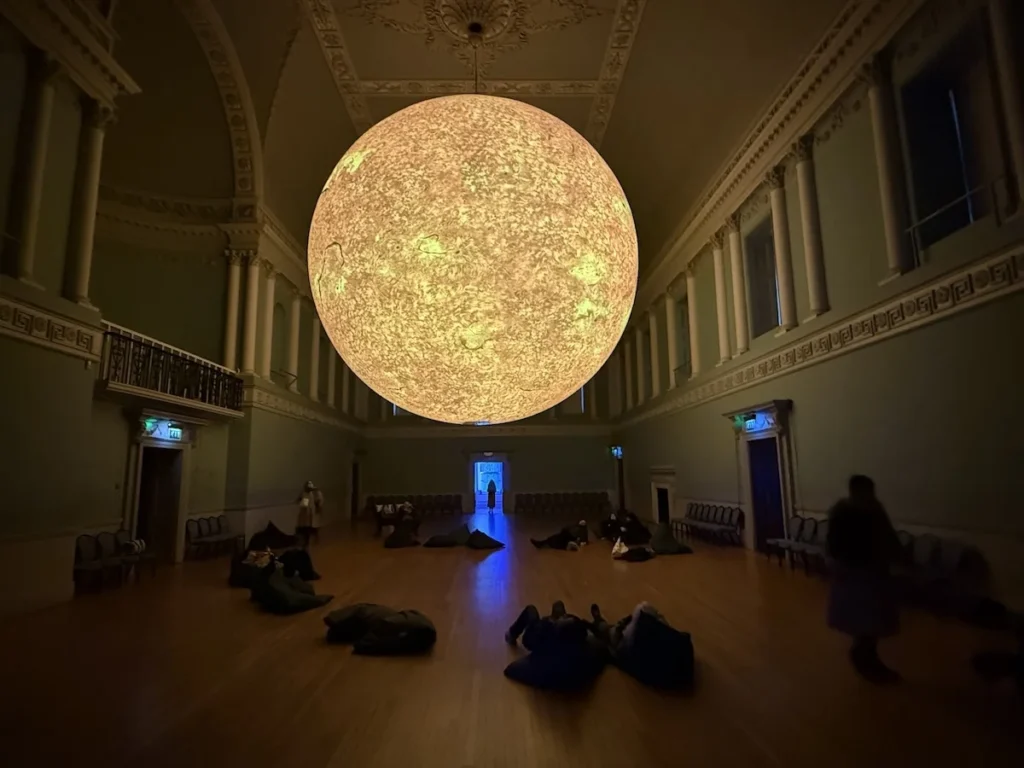
Suspended in grand historic spaces, Helios by Luke Jerram is an illuminated sphere meticulously scaled so that each centimetre represents 2,000 kilometres of the real sun’s surface. As it tours different locations, visitors can witness its swirling sunspots and experience its deep, resonant hum—captured from NASA’s solar recordings
What makes this installation even more immersive is the sound. NASA has captured the natural vibrations of the sun and translated them into audible frequencies. Standing beneath Helios, you don’t just see the sun—you hear it. It’s an eerie, meditative hum, a reminder that the sun is more than just a distant ball of fire.
This is the kind of experience that rewards slow observation. Luckily, there are floor cushions to allow you just to stop for a moment and think about something we take for granted, even on dull February days.
If I am honest, you are almost too close to it in the small Assembly Rooms. The scale of the orb and its patterns would look even better in a grand space like the Painted Hall in Greenwich, but it’s still worth visiting.
Helios is a touring installation, moving between major cultural venues worldwide.so if you missed it inBath, check the exhibition’s website to see where it’s heading next.
The Moonwalkers: A Journey to the Lunar Surface
If Helios lets you stand beneath the sun, The Moonwalkers takes you on a journey to the moon.
Held at London’s Lightroom, The Moonwalkers is a fully immersive experience, using high-resolution projections and powerful audio to pull you into the story of lunar exploration.
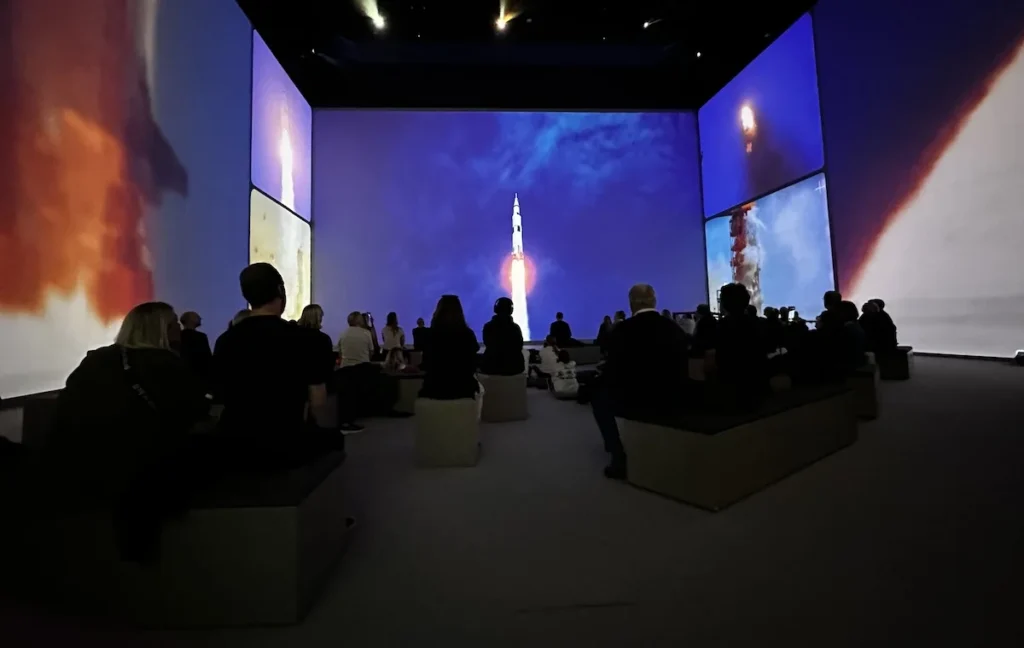
Narrated by Tom Hanks, it blends historical footage, astronaut interviews, and cutting-edge visuals to recount the Apollo missions in intimate detail.
I’m fascinated by space, I love Tom Hanks’ work, and I love the idea of an immersive film experience. The Moonwalkers did not disappoint. Sitting in Lightroom London’s cutting-edge projection space, The Moonwalkers exhibition unfolds in stunning detail. The story begins with small images on the side walls before expanding into floor-to-ceiling projections of rocket launches and lunar landings, creating a sense of [almost] weightlessness.
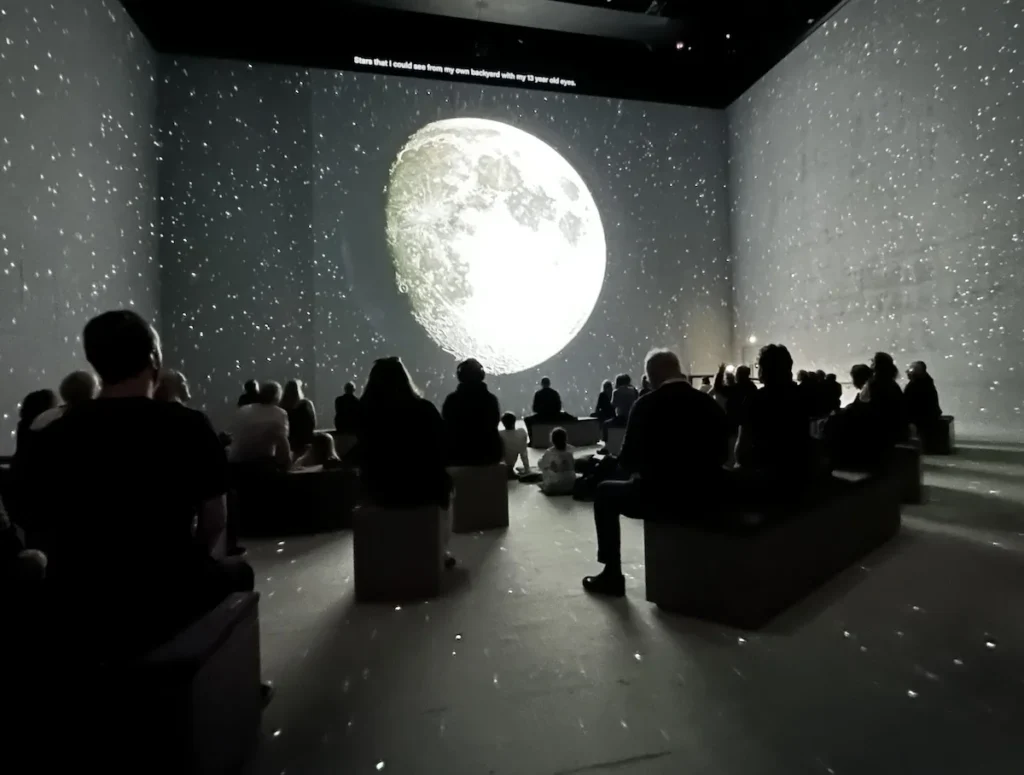
The quality of the video, taken from the early NASA missions, was incredible. It may have been upscaled, but this was high-quality, movie-style imagery—except it was real! I’d always assumed there had been just one or two moon landings, but there were loads, each with different astronauts, landing sites, and missions.
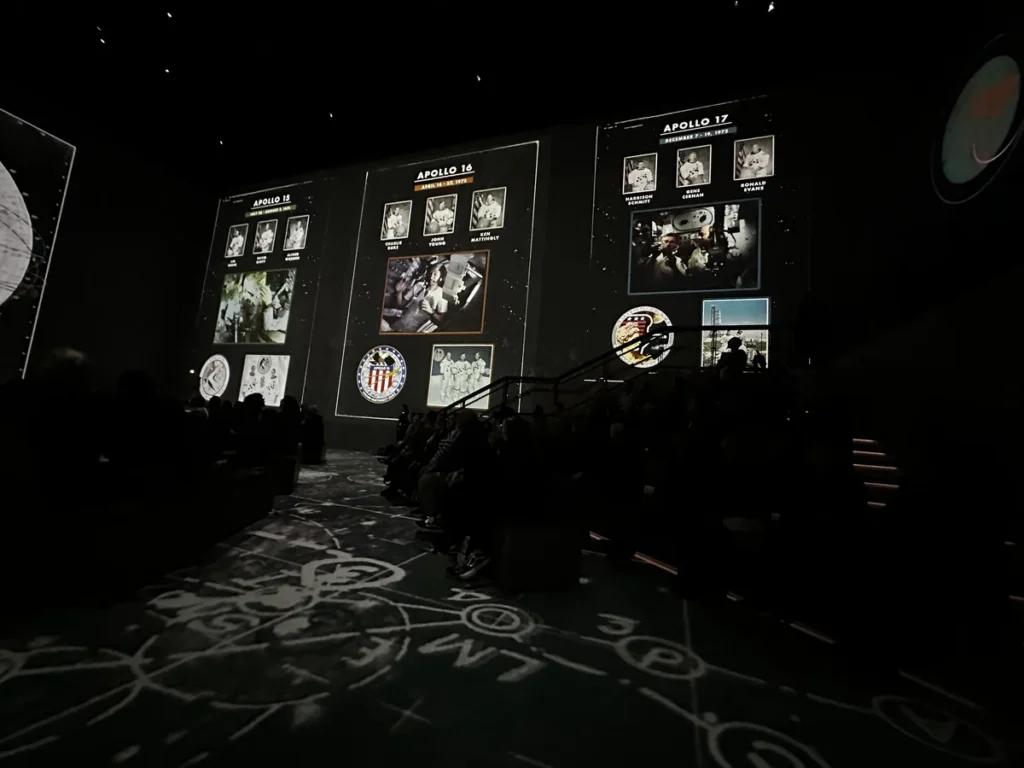
And they were all filmed and catalogued. This was as much an education as it was entertainment.
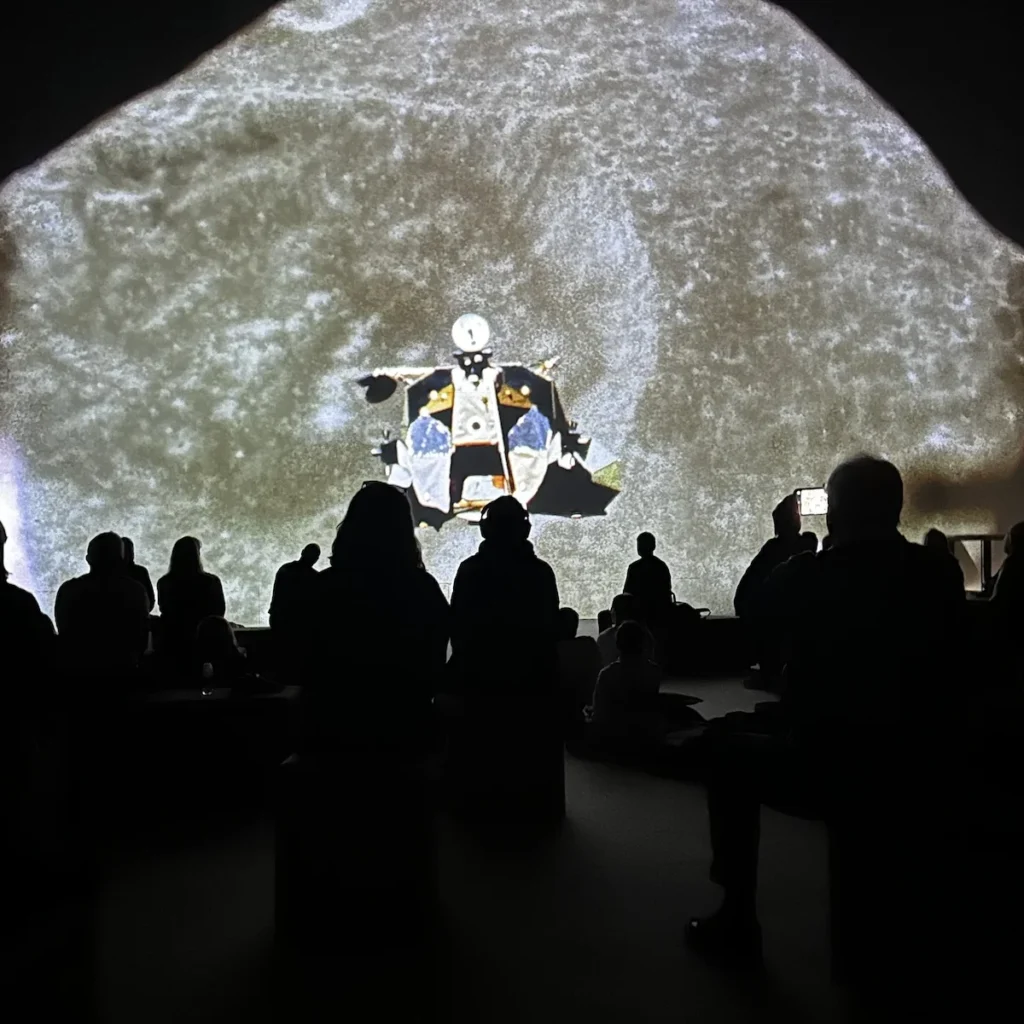
But The Moonwalkers exhibition at Lightroom isn’t just about the past. This exclusive London experience also looks ahead to the Artemis programme and the future of lunar exploration weaving in behind-the-scenes footage and astronaut interviews. Artemis, I learned, was the sister of Apollo—now that makes sense.
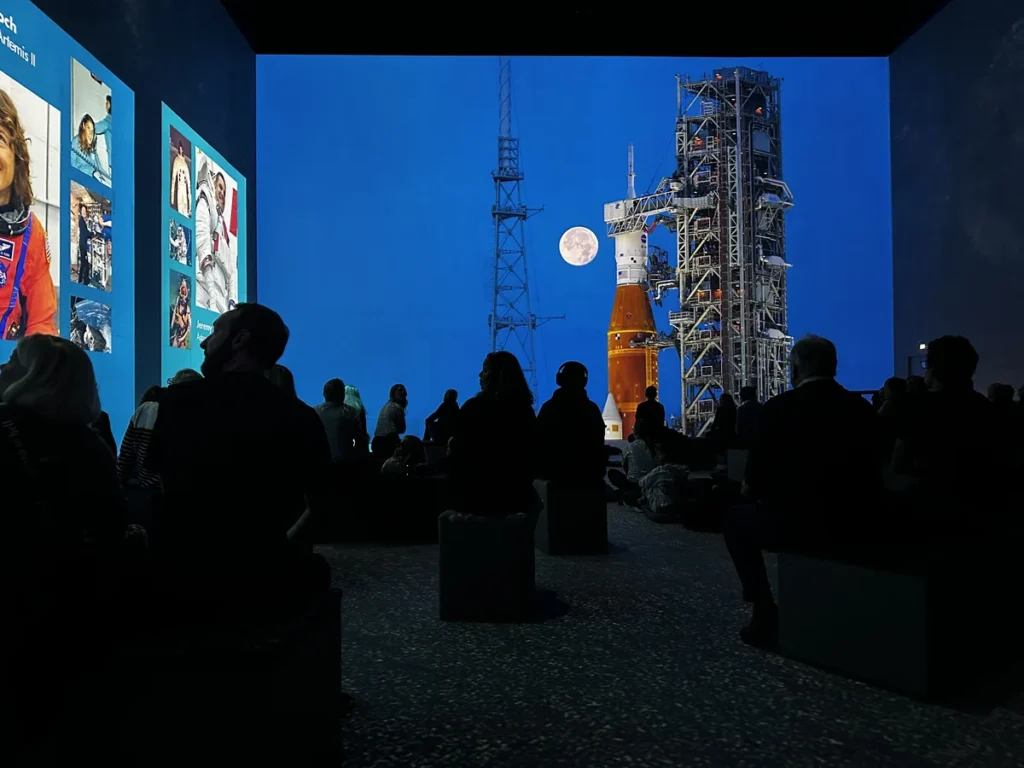
In less than an hour, we’d travelled to the moon many times, looking back before looking ahead—up to the Artemis missions.
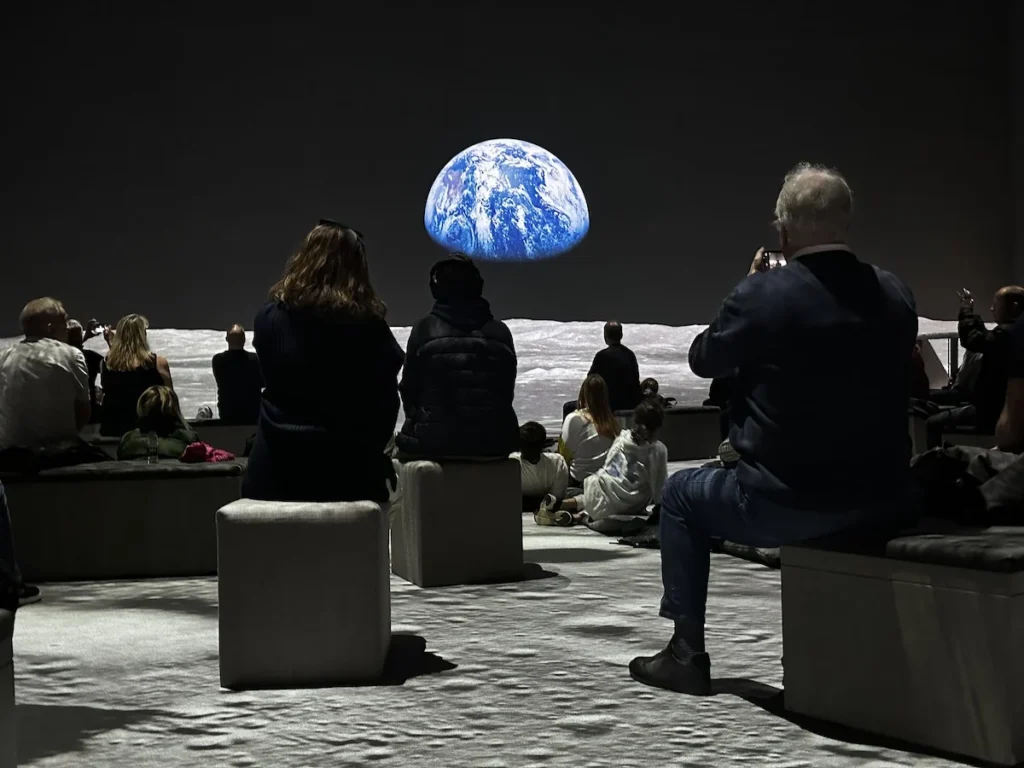
It’s an absorbing experience, one that stays with you after you leave, even more so if you stop in the café upstairs or come home with the official book (I did both).
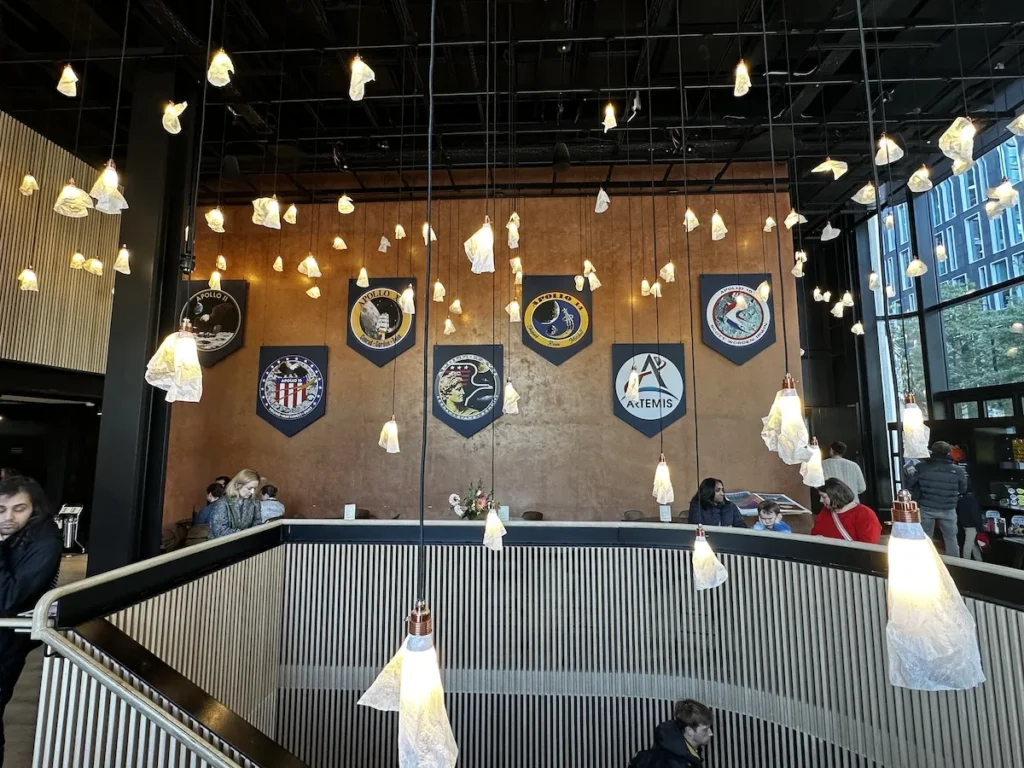
It felt a little silly taking pictures during the show, but I’m glad I did—and I’ll be going back to see it again. If you’ve ever been drawn to space exploration, this is well worth seeing.
The Moonwalkers: A Journey With Tom Hanks is on for selected dates at the Lightroom in Coal Drop’s Yard, a five-minute walk from King’s Cross station.
The Sound of Space
Space has always had a soundtrack. For me, it started with Apollo: Atmospheres and Soundtracks by Brian Eno—a drifting, weightless collection of ambient pieces that still feels like the most accurate sonic representation of floating in zero gravity. The classic track “Deep Blue Day” later took on an altogether more ‘underwater’ theme when it was featured in Trainspotting!
About a decade ago, the streaming radio station SomaFM started broadcasting Soma FM’s Space Station, a 24/7 stream of deep-space ambient music. It’s the kind of sound that makes you feel like you’re drifting through the void or staring up at the night sky, letting your mind wander beyond Earth. It’s still broadcasting if you want to take a listen.
Then there’s The Race for Space by Public Service Broadcasting, which turns historic mission recordings into something cinematic, making the tension and triumph of Apollo feel almost tangible.
Another album that captures the vastness of space—though often overlooked—is Mike Oldfield’s Music of the Spheres. A later work from Oldfield, it draws on the concept of musica universalis—the ancient idea that celestial bodies create their own cosmic harmony. In a way, it connects to the idea of the “hum of space,” a concept that feels right at home alongside NASA’s recorded solar sounds from Helios. (And no, it’s not to be confused with Coldplay’s recent album of the same name!)
“Rejoice in the Sun” was the opening credits song for the Seventies movie Silent Running with Bruce Dern. The movie told the story of spaceships that carried the last surviving forests of Earth, preserved in massive domes after environmental collapse made the planet uninhabitable. The song remains beautiful and poignant, sung beautifully by one-time Dylan muse Joan Baez.
“Walking on the Moon” by The Police was released in 1979 as the second single from their album Reggatta de Blanc and remains one of their most popular and iconic singles.
To Infinity and Beyond?
If space fascinates you—whether through art, music, or the sheer scale of the universe—both Helios and The Moonwalkers offer something worth experiencing.
One lets you stand beneath the sun, hearing its vibrations. The other places you on the moon, reliving history and looking toward the future.
Neither of them try to explain everything about space. Instead, they let you feel it.
📍 Helios by Luke Jerram is currently touring the UK check here for future locations.
📍 The Moonwalkers is at Lightroom, London—tickets available here.
